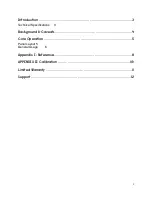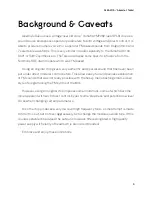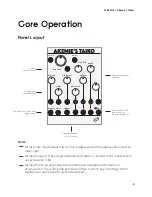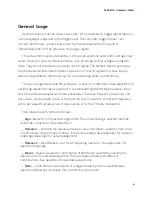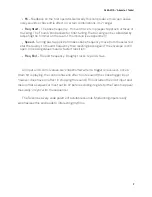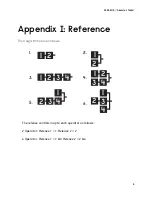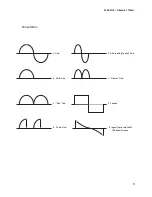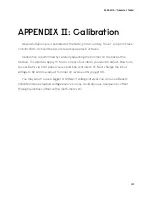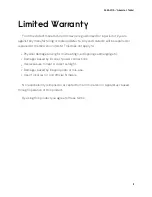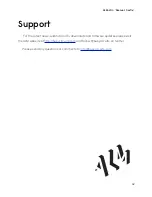
ALM-015 - ‘Akemie’s Taiko’
General Usage
Akemie’s Taiko produces a percussive like ‘hit’ sound when a trigger signal (approx.
+3v rising edge) is applied to the trigger input. The two other trigger inputs - Acc
(Accent) and Choke - respectively either further emphasise the hit sound or
immediately stop it in the presence of a trigger signal.
The actual ‘hit’ sound is defined by control knob positions and control voltage input
levels. All white control knobs are offsets - any incoming control voltage is added to
them. They do not attenuate incoming control signals. The 3 black ‘thumb’ pots allow
for attenuversion (attenuation and/or inversion) of control signals for these inputs
before being added to offsets set by the corresponding white control knobs.
The sound is generated via FM synthesis - a specific combination (aka algorithm) of
oscillating waveforms (aka operators) cross modulating at differing frequency ratios
over time at decreasing levels (release envelope). The base frequency, tracking 1 volt
per octave, can be made to rise or fall (and roll over on itself) to a final end frequency
with a set speed to produce ‘siren’ type sounds or further FM like modulation.
This maps to each control as follows
• Algo - S
elects 1 of 6 operator algorithms, The initial 2 being 2 operator and the
remainder 4 operator. (See appendix I)
• Release 1 -
Controls the release envelope curve of at least 1 operator from a few
10s of milliseconds to many minutes (16 discrete steps). See appendix I for operator
mappings dependant of selected algorithm
• Release 2 -
Like Release 1 but for an ‘opposing’ operator
-
See appendix I for
operator mappings
• Waves -
Selects a specific combination of 8 different waveforms used by the
operators for the selected algorithm. There are approximately 64 different
combinations. See appendix I for available waveforms.
• Ratio -
Controls the combination of integer frequency ratios used between
operators. Generally increases ratios as knob is turned CW.
!
6


